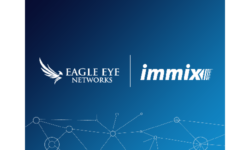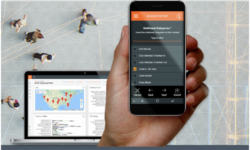Evolving Monitoring Center Standards in the Age of COVID
Due to success with working from home, some organizations want to modify UL 827 to allow for a permanent change that would, in essence, allow remote monitoring during normal nonemergent times.

COVID-19 seemed to come out of nowhere, but by March of 2020 its global prevalence and fast-growing threat nationwide had completely changed how monitoring centers operated day-to-day.
Suddenly, innovations in support systems like UV filtration systems, social distancing among monitoring personnel, employee monitoring to detect symptoms and a whole host of new technologies, practices, processes and policies had to be put into place in a matter of days.
It soon became obvious to many monitoring centers that there were compelling reasons to have some or all of their staff work from home, given that this was a “people” issue, not a technical issue.
Consequently, there was a huge push to figure out how best to do that, not only from a technical perspective, but also from a regulatory viewpoint. However, while UL is the primary author of the standards that rule our industry, there was then no standard under which monitoring centers could allow remote workers and remain in compliance.
Early on, The Monitoring Association (TMA) started working with UL and ULC to put out a temporary guide that would allow monitoring centers to be able to have remote workers monitoring alarm signals from home. This guide was intended to be used as a temporary method during an emergency while a more permanent change to UL 827 was put in place.
That initial guide (emphasis on “guide”) ultimately led to the creation of new sections in UL 827 that would allow for monitoring centers to be able to use remote workers only during emergency conditions like a pandemic. These sections were only intended to cover temporary conditions, which could be national issues like a pandemic, but also local issues like fires, flooding or civil unrest.
Simply put, it made sense to have acceptable methods at the ready that could address temporary or extreme conditions that are declared out of business owners’ control. The underlying rationale was that it would be better to have people at home processing alarms versus having no one processing alarms.
Many centers have had some or all of their staff working from home for many months now and with good success. Based on those experiences, there is now a pretty strong desire among some organizations to modify UL 827 to allow for a permanent change that would, in essence, allow remote monitoring during normal nonemergent times.
During the past six months, a task group has been working on the concept of taking what have always formed the cornerstone of central station reliability — redundancy, security and professionalism — and trying to create standards that would have the same outcomes even though the workforce is not inside the four walls where their productivity can be easily tracked and their efforts overseen.
Consider what we do today in managing security: the environment, connectivity, power and just plain old employee supervision, and then try to come up with equivalents for remote workers. That’s not an easy task to accomplish, and it is even more complicated from its other side — how do you audit a distributed workforce for compliance?
Placing any set of standards into starkly different environments isn’t easy. Looking first at the operations room where a specialist normally works, the employer can control who is in the room, the sounds and noises in the room, if the specialist is actually sitting in their seat, and are they being distracted with things like reading materials or phones.
But looking at a work from home model, first recognizing that no two homes are the same, how does the employer control who is walking in and out of the room, and can guests, spouses, children and others see the screens on which your staff member is working.
Consider the noise factors, like kids screaming or dogs barking. Imagine the distractions like kids, dogs, Facebook, personal phones ringing and dinging for calls and messages, and many more.
These are all real problems that have to be addressed, or we, as an industry, will have to commit to the idea that’s it’s OK to have specialists working from home even though there will occasionally be dogs barking in the background, kids interrupting and, very possibly, lower productivity given over to distraction. We will also have to convince our customers to commit to that as well.
None of these problems are hard to imagine anymore. Just think about all the Zoom calls you’ve been on the past 10 months, then try to inject, “I’ve fallen, I’m bleeding and I’m alone.”
Regardless, the pandemic has informed us that we urgently need to develop standards to meet unforeseen circumstances over which we have little or no control. Inside UL 827 will be requirements on how this can be accomplished with the intent to have like-service to what we have now.
Following are some of the considerations that will need to be worked out for not only how to accomplish this, but also how it can be audited. Much of this is still being worked on, but here are the major considerations thus far:
Work Space: In the new addition to UL 827, a suitable location will be required for the specialist to work such that screens cannot be viewed by others and noise distractions can be kept under control. Additionally, there will have to be methodologies to allow for auditing to ensure those standards can be maintained.
Power: There will be models that could require anywhere from no backup power to up-to-an-hour power, depending on the types of alarms that are being monitored. This will likely end up being a performance-based section wherein if you can show that your workforce is sufficiently distributed, such that a regional power failure wouldn’t affect enough of your workforce to impact overall performance, there may not be a need for backup power at all.
Connectivity: There are two parts to this, the first being the security element. Is the connection secure from data breaches, which is typically accomplished with encryption and multifactor authentication? The second part is whether it is reliable and, accordingly, whether it requires any kind of backup solution.
As with the backup power requirements, this will be performance-based such that if you can show that your workforce is sufficiently distributed, such that a connectivity failure wouldn’t affect enough of your workforce to impact overall performance, you might not need a backup form of communications for some or all types of your accounts.
Automation: There are going to be some additional requirements for automation to be able to keep track of when operators get disconnected and subsequently to reroute to another specialist along with some additional auditing and reporting requirements.
In order for all these standards to actually come to fruition, there are two things that will need to happen. The first will be a round or two of public comments on proposals for an updated UL 827. During the public comments, any stakeholder will be allowed to make comments to the technical committee, and the committee has a duty to respond to all comments. If you feel strongly, one way or the other, sign up at UL.com to be able to make and read all comments. It’s free and open to anyone.
The second part of the process is that UL is obligated to being in alignment with other codes and standards, especially NFPA 72. Consequently, in addition to the work on UL 827 there will have to be work done on NFPA 72, which will likely be done in the form of a temporary interim amendment (TIA) that would allow the deviations from the current versions of NFPA 72.
COVID-19 has changed the world, including how alarms are being monitored and how they might in the future. I am not sure if this change is a good thing or not, as I personally see pros and cons to both sides. Monitoring centers will have to make some choices as to how they want to operate in the future.
There will be centers that make a decision to not ever have a workforce working from home or to send them home during an emergency; others might do both or only send people home during an emergency. There is a lot at stake here, and over time we will be able to measure and track the success or failures once this gets fully deployed.
In the meantime, we can expect exigencies like those we have faced in 2020 to test us and at times to test us severely. I’m confident that those circumstances will also inform us, as the pandemic has done, on how best we can protect the lives and property of our clients. I encourage you to add to that body of experience by contributing to the development of these new standards.
If you enjoyed this article and want to receive more valuable industry content like this, click here to sign up for our FREE digital newsletters!

Security Is Our Business, Too
For professionals who recommend, buy and install all types of electronic security equipment, a free subscription to Commercial Integrator + Security Sales & Integration is like having a consultant on call. You’ll find an ideal balance of technology and business coverage, with installation tips and techniques for products and updates on how to add to your bottom line.
A FREE subscription to the top resource for security and integration industry will prove to be invaluable.









Morgan, excellent presentation. You made the case for dropping lots of unnecessary legislated regulations that applied decades ago, but not today. The big muscle DIY/MIY guys agree. Such historical legislation has been tough barriers-to-entry. The DIY/MIY guys probably thank you.